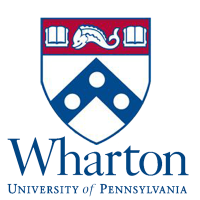A Review of a March 2014 social impact report from the Wharton School of Business, Philadelphia, PA, by Neil Seldman, Institute for Local Self-Reliance, Washington, DC
Changes in solid waste management have indeed made a great social impact in the past few years. However, the Wharton School’s Social Impact March 2014 report, Zero Waste: “Nil to Landfill” Is Now a Practical Goal, gives only a glimpse of how new expectations have shifted attitudes, technologies and practices about what recycling can do for a local economy in the near future. Another flaw in the review is its lack of precision when using the terms “zero waste,” and “Extended Producer Responsibility” or “EPR.” As a result, while the report introduces interesting and innovative information on businesses and projects, it leaves the reader behind when it comes to appreciating the current state of the art.
The “nil to landfill” claim is a new approach by companies trying to win customer support for their green works. The reality is that, while claiming “zero waste to landfill,” these companies send their wastes to incinerators. All incinerators need landfills for ash and bypass wastes; these byproducts make up about 20% of the waste stream by volume. For decades, the counties in southern Florida counties have reached the “zero waste to landfill” goal. So when Florida declared a 75% goal to diversion, these counties were already covered. Alachua County has a goal of 75% without incineration. The current flirtation with garbage incineration in all its forms is, in fact, a repetition of 1980s and ’90s efforts to build more than 300 facilities. Only a few of those ended up being built. Today’s wave—an estimated 100 garbage incineration proposals—is meeting a similar demise at the hands of citizen and environmental activists and small businesses. Most recently, there has been a big shift in strategy. The industry is moving away from building new incinerators: rather, companies like WMI will focus on prepared or processed fuels from mixed garbage to be burned in relatively small facilities that are below the EPA threshold for pollution controls, with no community opposition.
Wharton’s report presents good information on real zero waste developments: for example, it includes a description of Paul Connett’s new book, The Zero Waste Solution (Chelsea Green, 2013). This book is the best source of up-to-date information from around the world. The report also cites achievements in Italy—in Capannori, for example—that Connett documents in his book. There is a growing European movement against incineration: officials are backing away from the practice in favor of recycling and composting.
At the same time, European countries are moving away from the EPR system that gave industry a monopoly over recycling. This program is being demonopolized as recycling costs have soared without competition. As new companies are allowed to enter the sector, officials are seeing a 50% reduction in the costs of recycling. The report does not cover the dramatic changes in US EPR policies, which are eschewing brand-name corporation control of EPR in favor of individual company EPR that supports the local recycling industry instead of replacing it. Corporate control over EPR and recycling has been proposed by leading environmental and industry groups such as Recycle Reinvented and NRDC.
There has been strong recycling industry push back against the corporate dominated model. The city of Berkeley, Calif. originally adopted a corporate EPR ‘Framework’ espoused by the Product Packaging Institute, renamed Upstream. The Citizens Zero Waste Commission proposed an alternative approach to EPR that establishes local agency control, subject to citizen discussion and debate. The City Council approved the new EPR policy. In British Columbia, monopolization, nexus with incineration, confusion and business resistance followed the introduction of the unpopular EPR System. These events reinforced the negative posture to this concentrated form of EPR. Sims, Inc., the largest metals recycling company in the world, closed its facilities in Ontario and British Columbia as a result of their EPR policies. The retrenchment from corporate EPR was a grassroots effort on the part of recycling practitioners and activists acting to protect a robust industry that has been nurtured for the past 40 years, and that has achieved one million jobs, 65,000 companies, and 10,000 local government programs. It regularly delivers 100 million tons of raw materials to US agriculture and industry.
The discussion of EPR also must distinguish between discarded materials that are not wanted in the community—e.g. toxic materials—and what materials are wanted in the community, e.g., materials and products to which you can add value through manufacturing and processing jobs and tax base. EPR works well on the former, not on the latter.
The report mentions the achievements of San Francisco’s recycling and composting systems, but overlooks perhaps a more interesting situation across the Bay. In Berkeley, the recycling rate is equal to that of San Francisco, but a community-based ecology of commerce has flourished. Six agencies—nonprofits, for-profits and city departments—accomplish what in San Francisco requires a unique city charter monopoly.
Alas, the report does not focus at all on composting, which is expanding rapidly to over 200 municipal collection programs and hundreds of new companies and community-based eco-farms. A new generation of equipment has been introduced to meet the needs of this new sector of the recycling industry. Similarly, the report fails to mention reuse enterprises, which are also expanding rapidly. These companies focus on the 5% of the waste stream that is repairable and reusable, and can add value that is equivalent to 50% of all other recovered recycled materials.
It is true that the economy is on the path to zero waste, but not because of the factors enumerated in the Wharton Report. Rather, as has always been the case, the prime movers in recycling, reuse and composting are organized citizens and small businesses, focused at the local level of government. This is where decisions on recycling and waste are made. Yes, individual companies do at times introduce better products and packaging, but the engine of reform and change has come, and continues to come, from the ground up.





